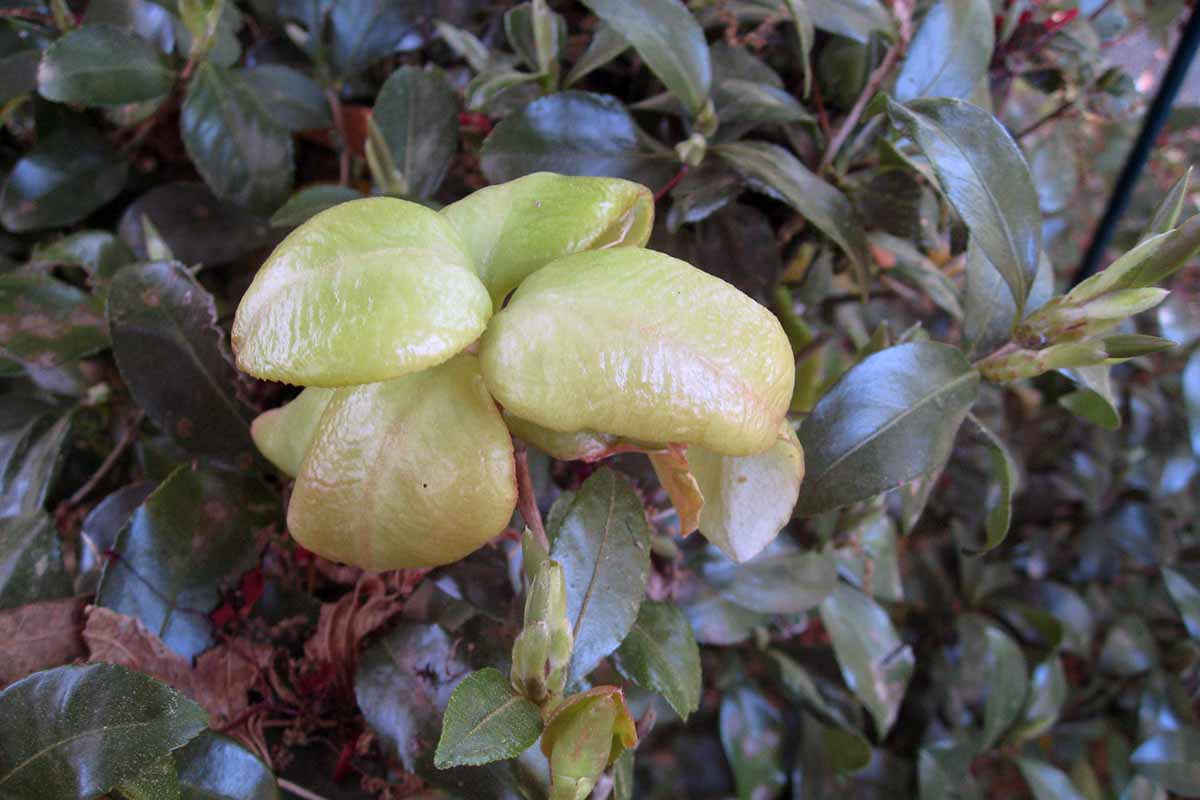Plants are unearthly and wonderful . Some days they front picture complete and other times they look unquestionably … untimely .
Sometimes the problem is a branch that is growing oddly round-shouldered , or peradventure the sun char the leaves of a shade - get laid coinage .
And then there are those times when disease strikes and causes your flora to do some unknown stuff .

Photo via Clemson University – USDA Cooperative Extension Slide Series , Bugwood.org, viaCC BY-SA.
We link to vendors to assist you retrieve relevant products . If you buy from one of our links , we may earn a commission .
Leaf gall is one of those disease that can change state a stunningly beautiful camellia into a display that give you scratch your brain .
It cause ill-scented - look growths that make the leaves change by reversal into something that looks more suited to a succulent garden .

If you ’ve observe something strange happening with the leaf on your camellia plant , it could be leafage resentment .
In this guide , we ’ll talk about what causes this problem , what it looks like , and what you could do about it .
Here ’s everything we ’ll go over :

What You’ll Learn
This fungal issue is far from the worstdisease a camellia plant can contract , but that does n’t signify it ’s something you need to ignore or encourage to stick around around .
And by the fashion , if you ask a refresher onhow to grow camellias , stop out our template .
Let ’s show this disease the threshold !

What Causes Leaf Gall?
Camellia leaf gall is a disease because of the fungusExobasidium camelliae . This fungus may attack all industrial plant in theCamelliagenus , but it mostly affectsC. sasanqua .
The “ roots ” of the fungus , technically called haustoria , suck up nutrients from the host plant life and cause some unusual symptoms .
These fungi can travel in wind and water , and can lay dormant on flora material all winter long , just waiting to explode forth and wreak havoc in the spring .

You ’ll start to see symptom in mid - saltation as the pathogens start procreate , maturing , and spreading .
This fungus is emcee - specific , which means you do n’t need to interest about it attacking yourrosesorrhododendrons . It can only live on camellias .
Of naturally , other plants can contract similar looking diseases , but they ’re due to a different type of fungus .

Symptoms to Look For
Unsurprisingly , the most obvious symptom of this disease is bile on the leaves of the plant . These gall can also form on vernal shoots .
The galls are yellow , light green , cream , pinkish , or red . As they mature , the layers on the back of the leafage starting line to peel away , disclose a ashen layer underneath . This white bed is the fungus .
The leaves of affected plants become extremely thick , up to five times as dense as they commonly would be . In fact , they sort of start to seem like succulent leaves . shoot will look larger than normal and fleshy , as well .
The foliation turns lighter green on infect leaves , which is often the first symptom that gardeners note .
As the season move on , the gall plow brown and fall off the foliage and onto the ground , where the kingdom Fungi can advert out until the next year to taint again .
How to Treat This Disease
You ’ve heard the speculative news , now for the safe news ! Leaf resentment is n’t really a large quite a little . It ’s kind of weird - looking , but it does n’t hurt the plant in the long term . Just peel the galls off , seal them up in a bag , and toss them in the folderol .
The legerdemain is to take the impudence offbeforethe leaf level begin peel off , revealing the ashen fungus underneath .
Once that happens , the fungal spore are being secrete into the human race and will retrieve another boniface to hang out on , and you ’ll have to fill in the appendage of removal all over again next year if your plant are reinfected .
If your camellia has a hard infect subdivision with more than half of the leave showing symptoms , just pare off the intact offshoot and incline of it .
Then , clean up the ground well just in case any bile that have devolve are try on to sneak by . If you remove any accrue foliage as well as the galls , you deny the fungi a situation to overwinter .
Remember never to pose infected works material on yourcompost pile , as this can encourage further spread .
Put an End to This Galling Disease
Leaf gall is n’t a death sentence for your camellias . With a minuscule extra work on your part , you’re able to get this disease under control and return your plants to their beautiful self .
I hope this guide serve you onyour camelia - arise journey . If it did , you might require to check out a few of our other guide to these wonderful blossom . Here are a few that you might incur interesting to add to your meter reading tilt :
© Ask the Experts , LLC . ALL RIGHTS RESERVED.See our TOSfor more particular . Uncredited photos : Shutterstock .
About
Kristine Lofgren